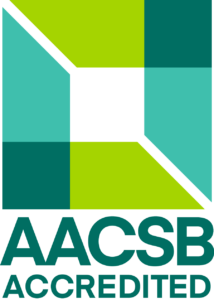Multimedia in Trade (in English)
- Credits: 3
- Ending: Examination
- Range: 2C
- Semester: summer
- Year: 1
- Faculty of Commerce
Teachers
Included in study programs
Teaching results
The student will be familiar with the topic of multimedia in terms of media types and in terms of media formats. The course explains the ownership structure of selected types of media, trends in the consumption of selected media by consumers, the extent of use of media types for marketing purposes and defines trends that affect the development of selected types of media.
The graduate of the course acquires an overview of the Slovak media market, is familiar with the pricing of the media space and is able to identify suitable media channels for the company's communication strategy. The graduate will also gain practical experience with selected media formats and understand the possibilities of their use for marketing and advertising purposes.
Thanks to the acquired knowledge, the graduate of the course can apply for a job position in a wide range of companies that use the media space of defined types of media for the execution of advertising campaigns and marketing communication.
Indicative content
The media as a provider of media space is an integral part of marketing communication. The course focuses on media types television, radio, print, out of home, cinemas and the Internet. It explains the history of mass media in Slovakia, the current ownership structure, the method of purchasing media space, formulas and calculations of media space prices, formulas and calculations of the most important indicators of mass media performance and last but not least the impact of digitalization on particular types of media. The course also identifies the basic media formats, which can include text, stable image, audio and video. It explains the use of defined formats in the mass media, how to prepare for their creation, production and distribution across selected media channels.
Support literature
1. Turow, J. (2019). Media Today: Mass Communication in a Converging World. Milton: Routledge.
2. McDougall, J., & Pollard, C. (2019). Media Studies: The Basics (2nd ed.). Routledge.
3. Ott, B. L., & Mack, R. L. (2020). Critical media studies: An introduction. John Wiley & Sons.
4. Miller, C.H. (2019). Digital Storytelling: A creator’s guide to interactive entertainment (4th ed.). CRC Press.
5. Lacombe, P., Feraud, G., & Riviere, C. (2019). Writing an Interactive Story (1st ed.). CRC Press.
6. Friedmann, A. (2014). Writing for Visual Media (4th ed.). Routledge.
Syllabus
1. Two point of views on multimedia 2. Categorization of media in terms of media types 3. Television as a media channel 4. Radio 5. Print media 6. Out of home advertising space 7. Cinemas 8. The impact of digitization on selected types of media 9. Categorization of media in terms of media formats 10. Text 11. Pictures 12. Videos 13. Audio
Requirements to complete the course
40% active participation, solving practical tasks, continuous verification of knowledge;
60% written exam
Student workload
Total study load: 78 hours
Attendance at seminars: 26 hours
Preparation for seminars: 12 hours
Preparation for continuous verification of knowledge: 13 hours
Preparation for the exam: 27 hours
Language whose command is required to complete the course
English
Date of approval: 06.03.2024
Date of the latest change: 22.05.2022

